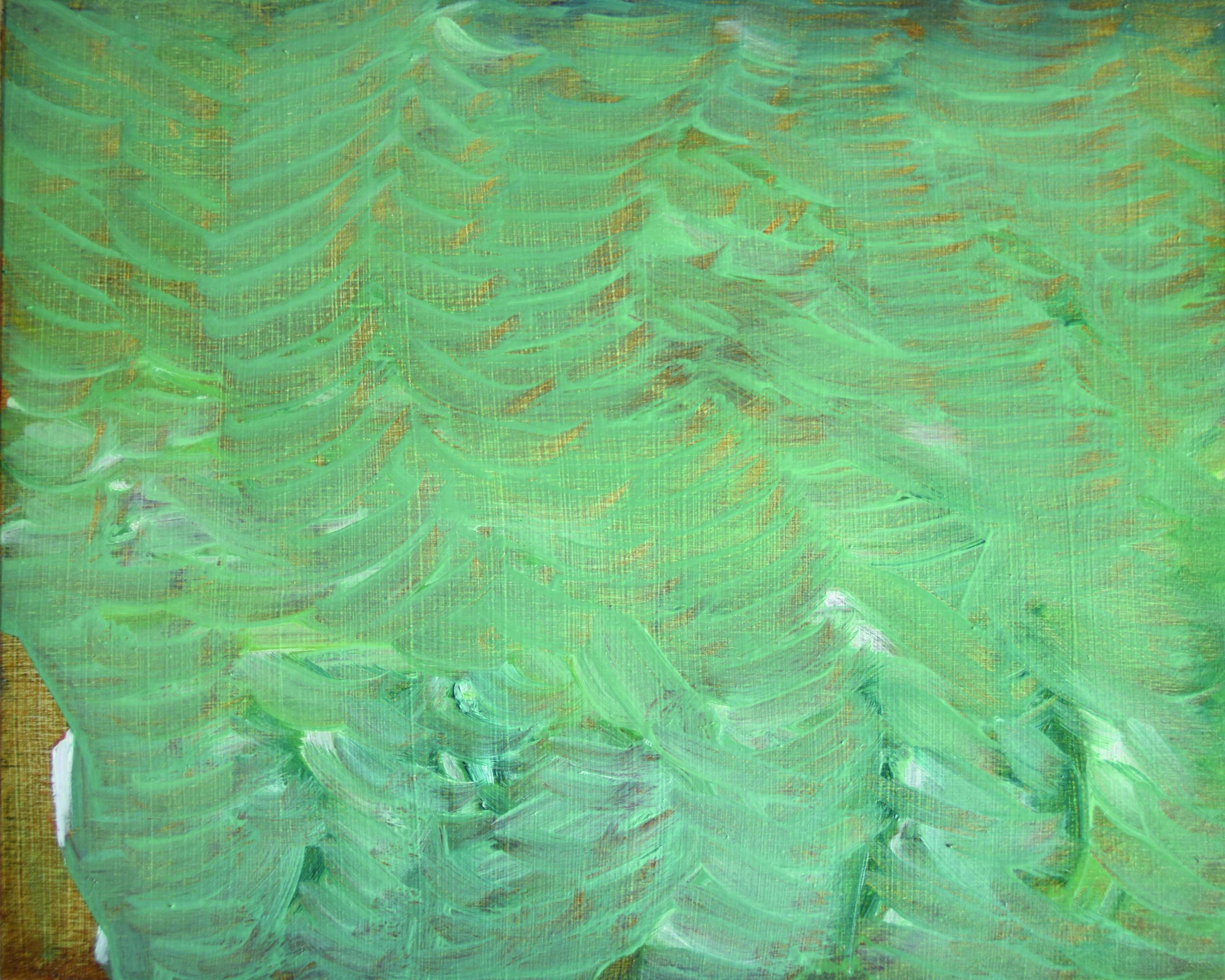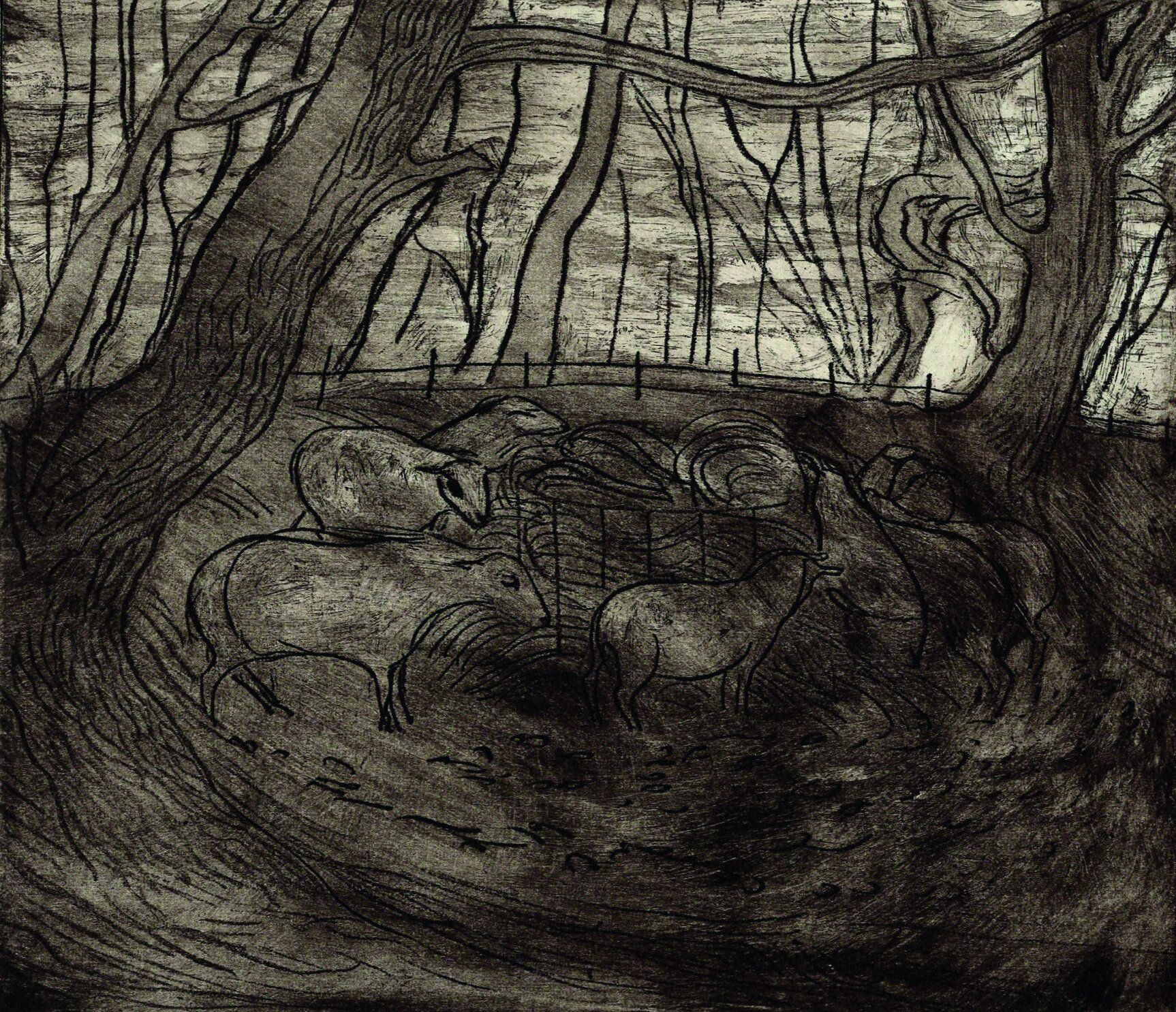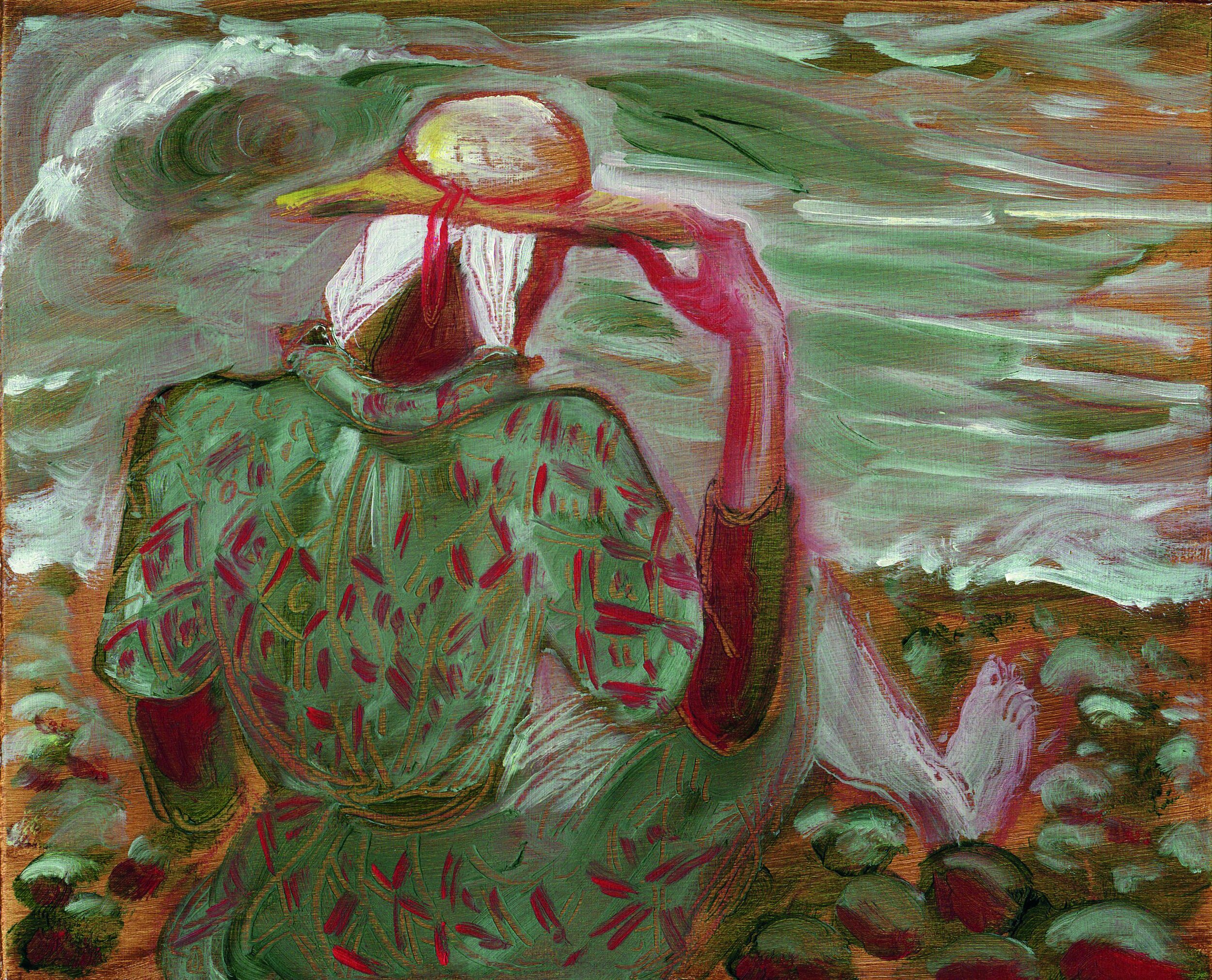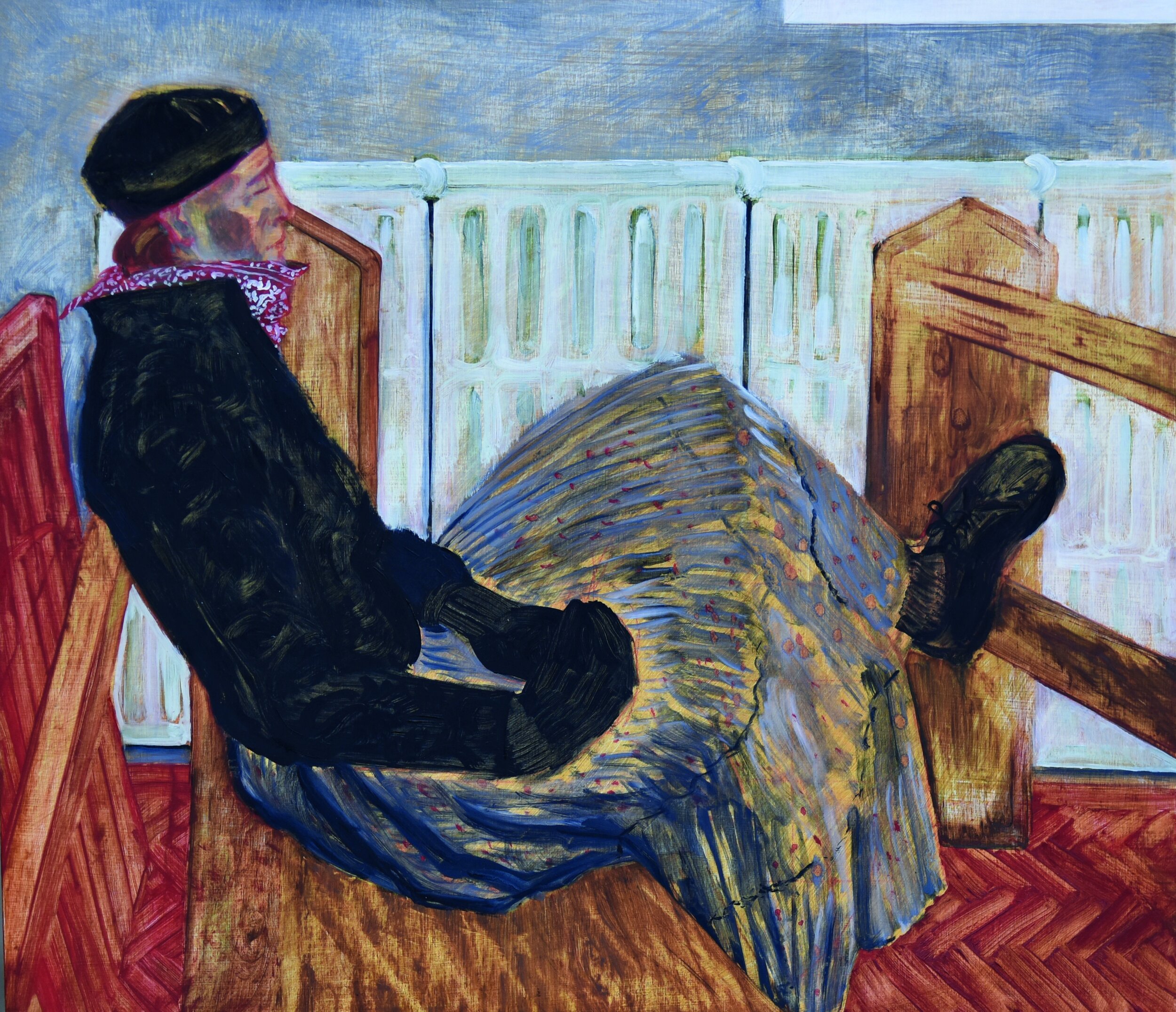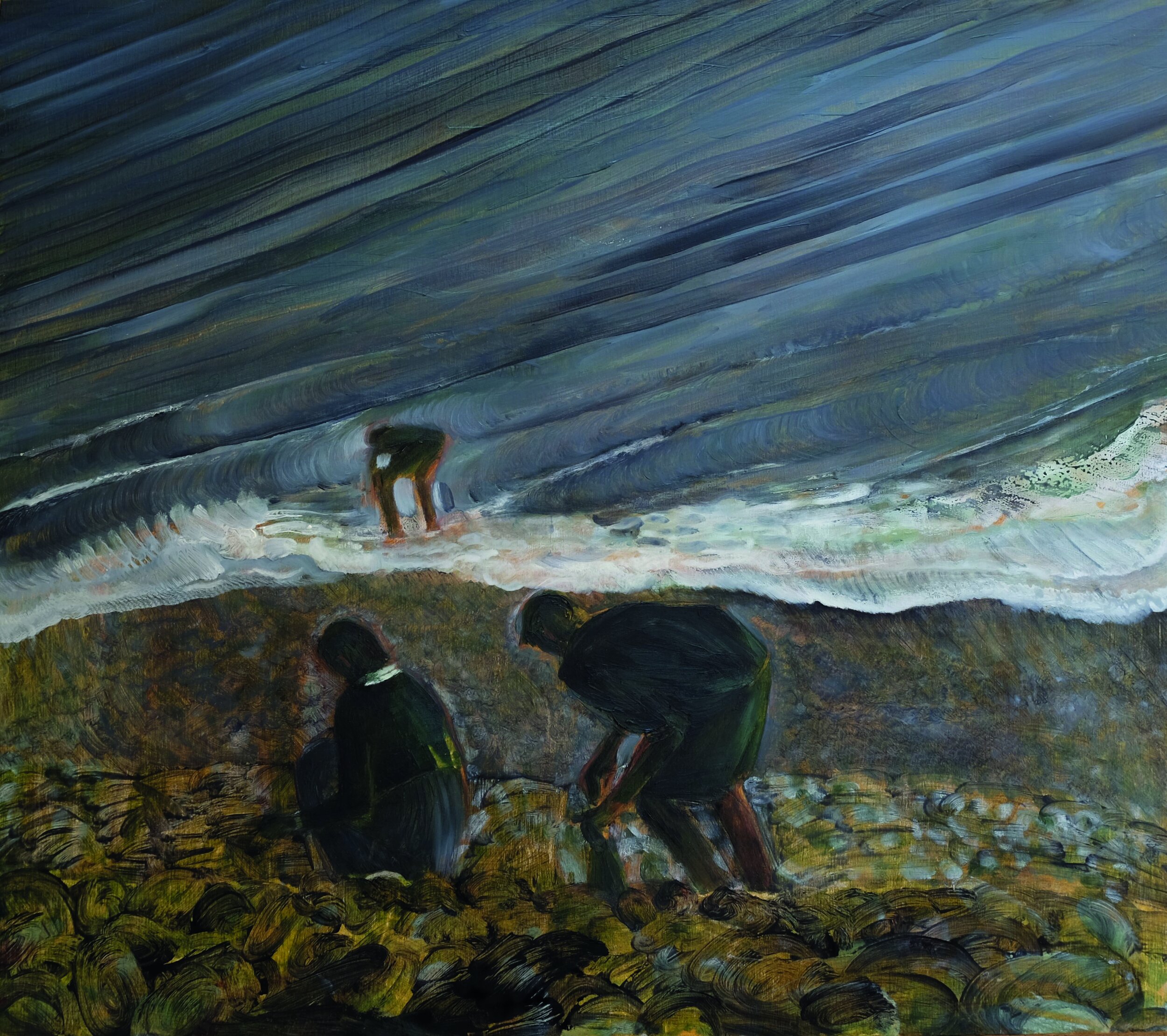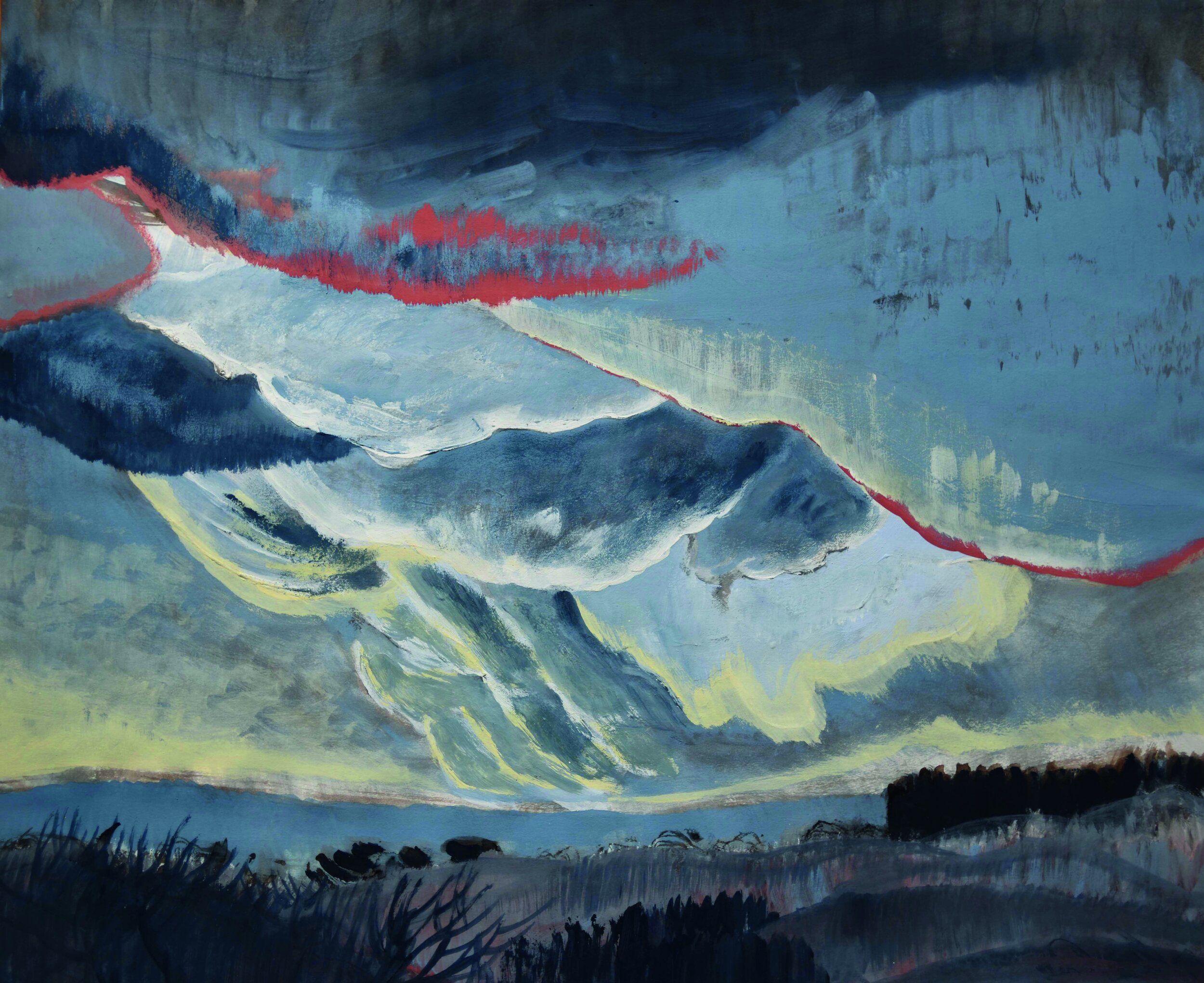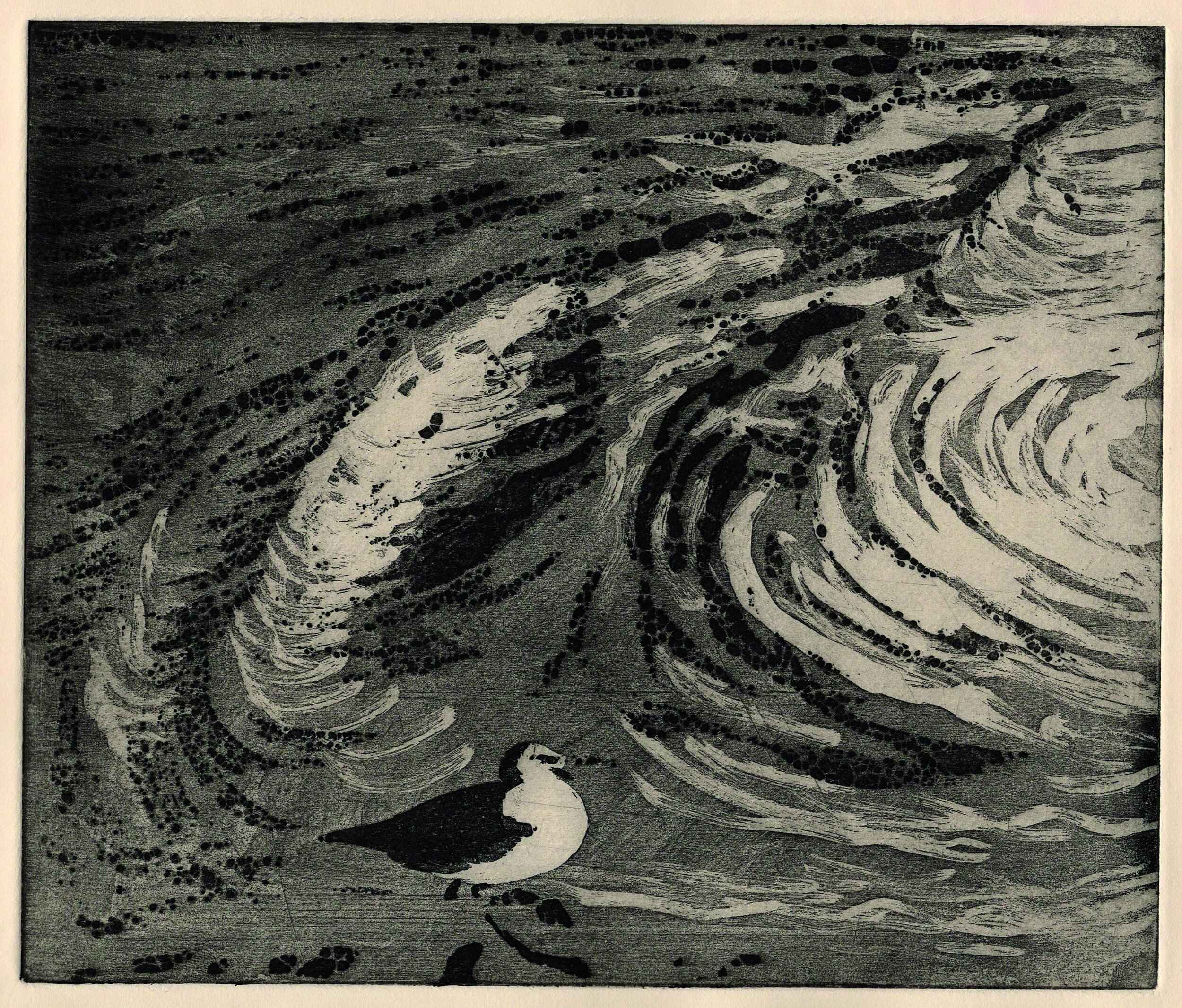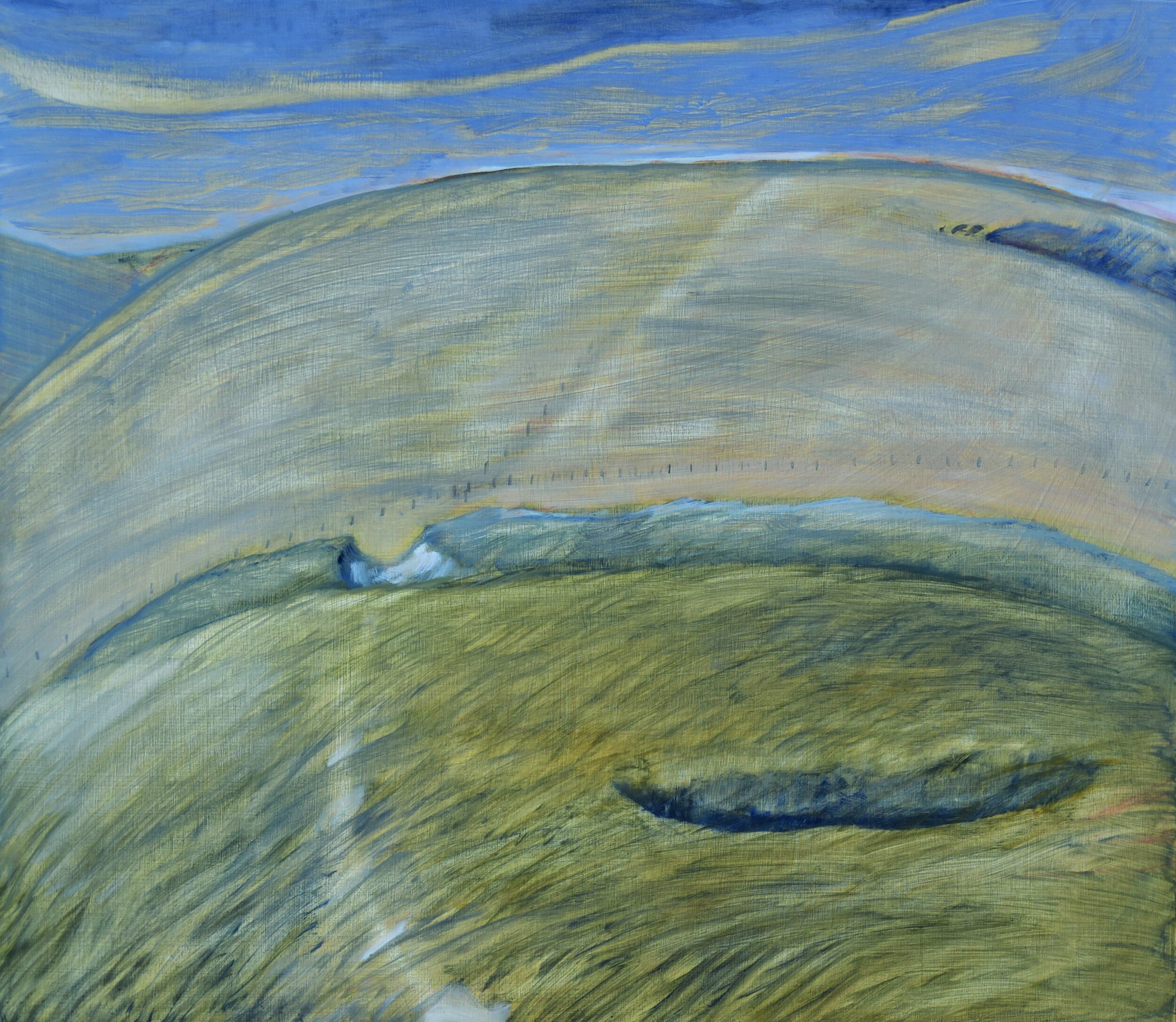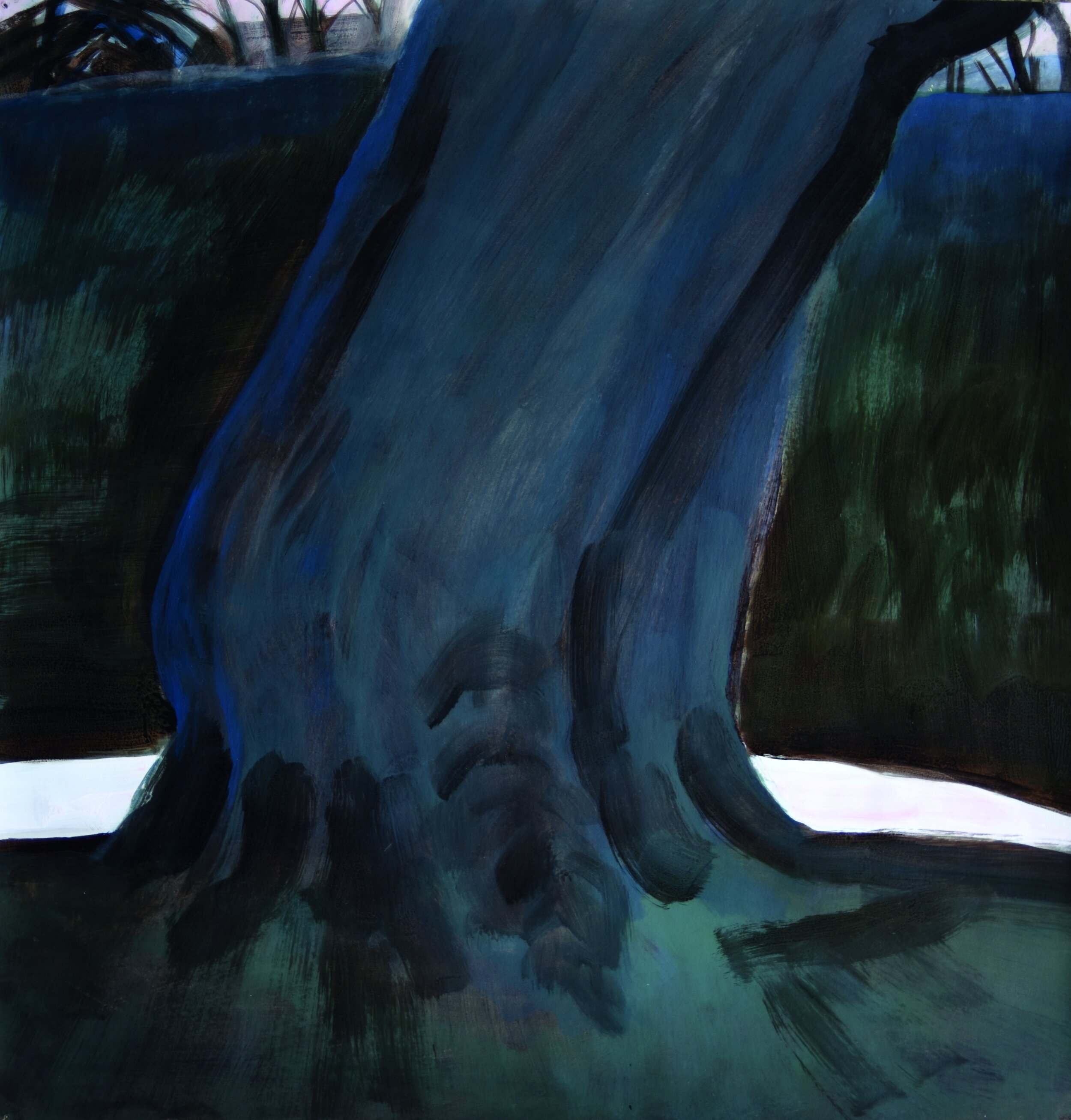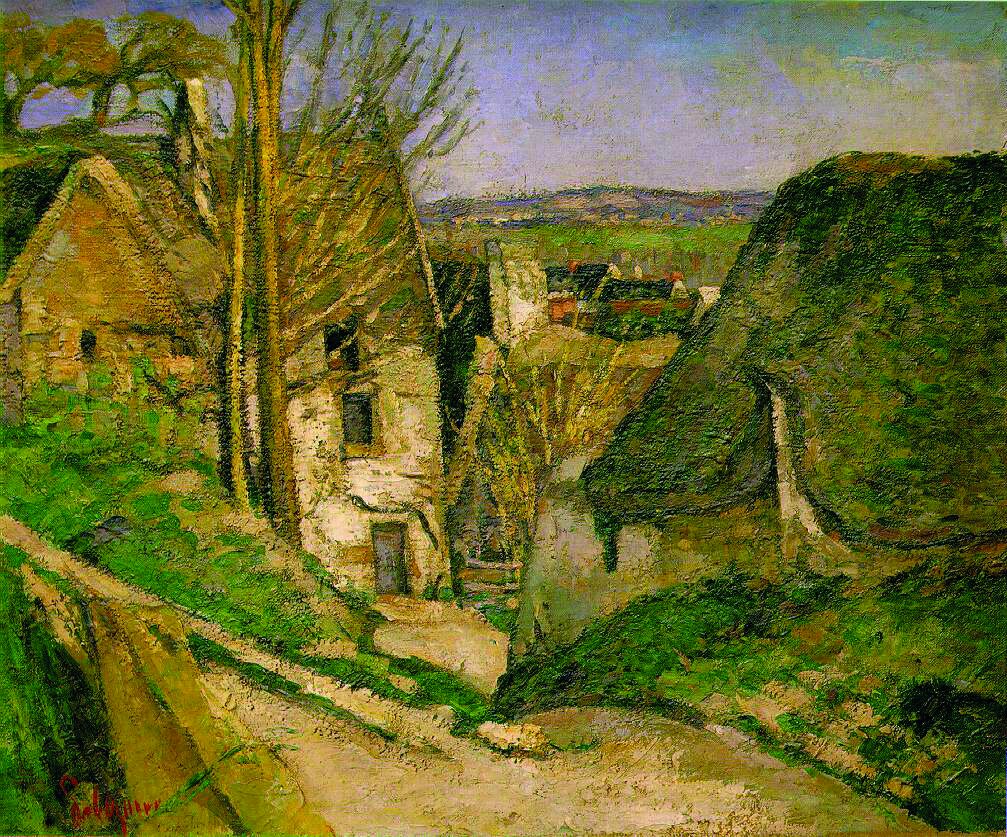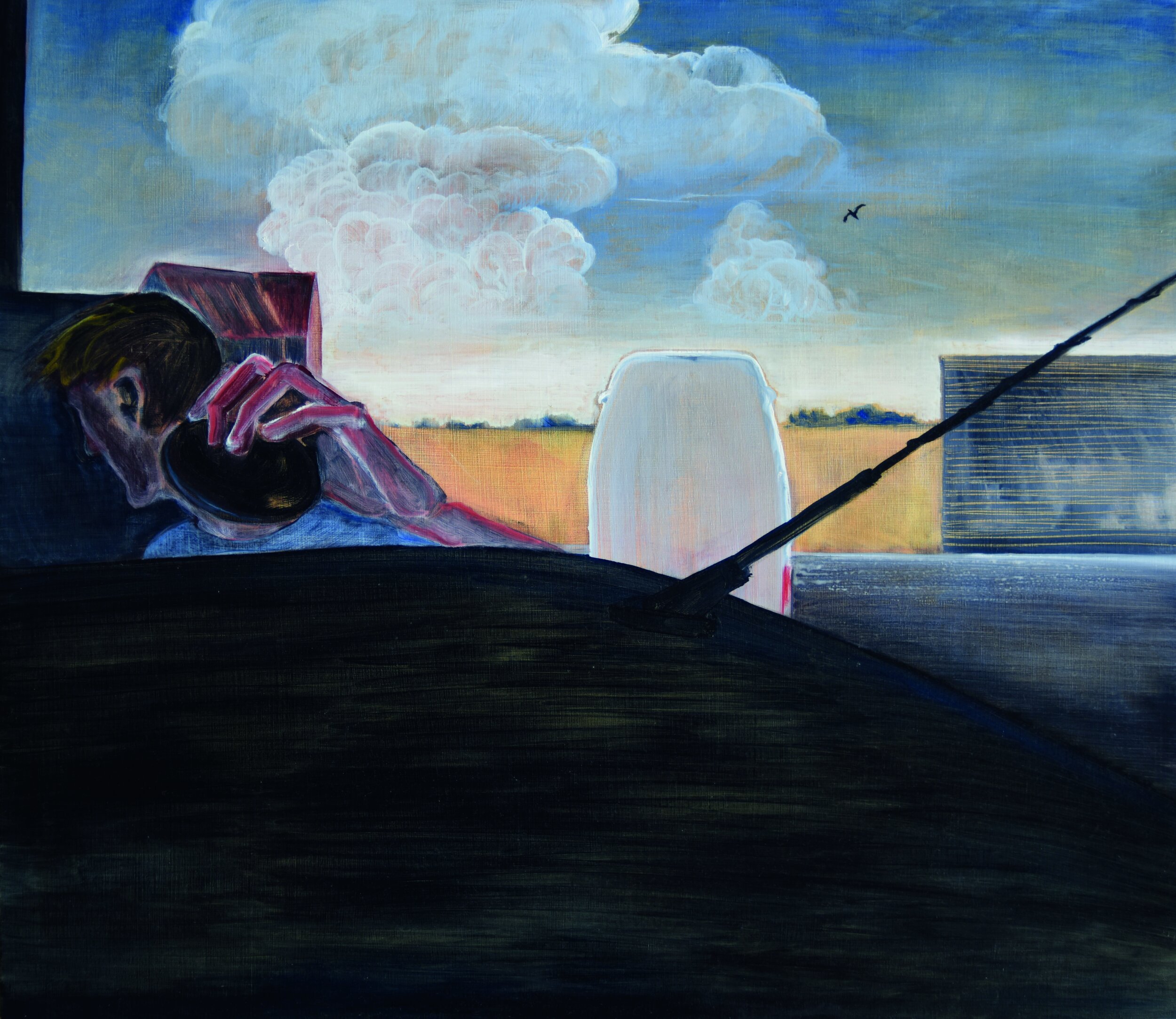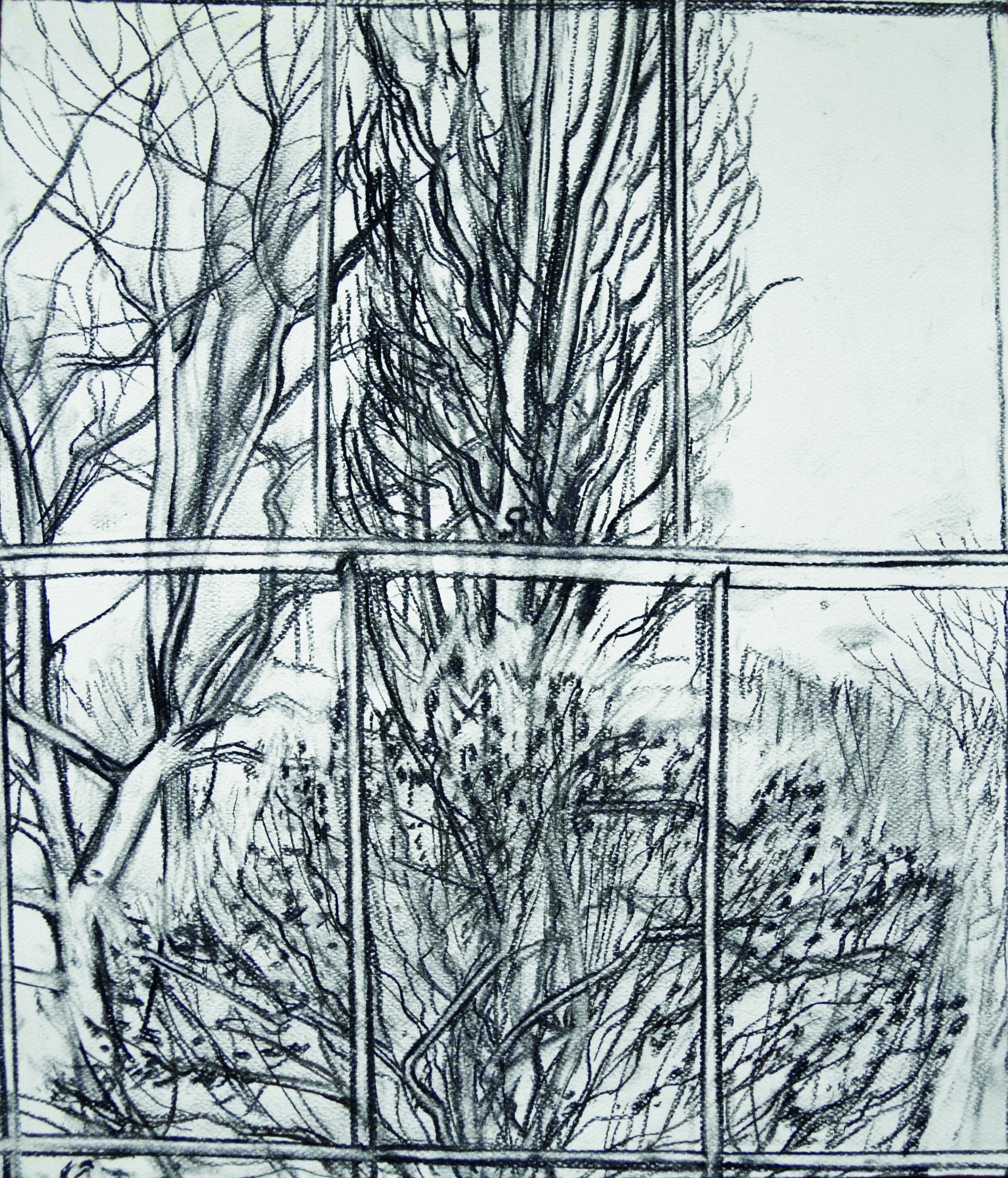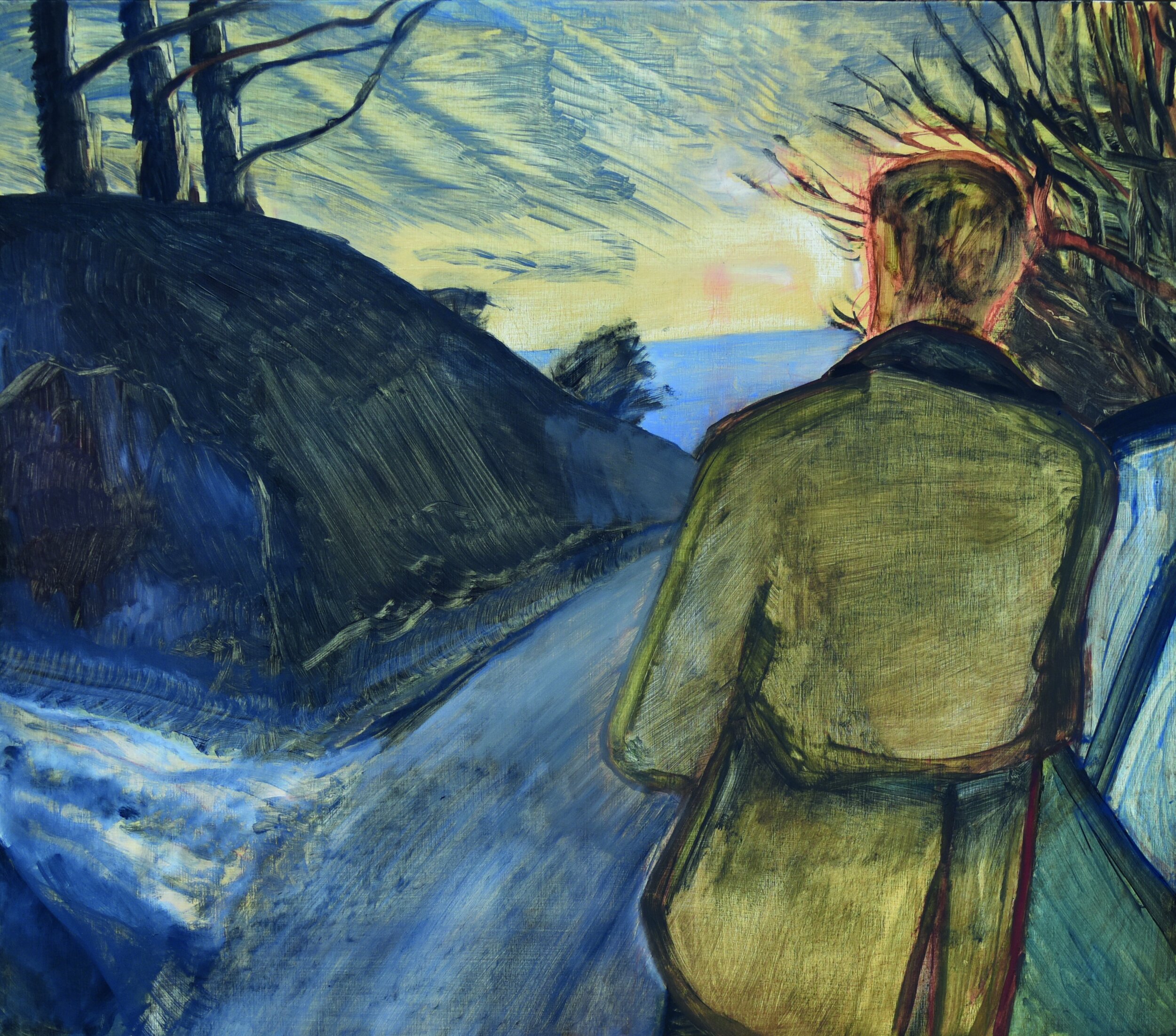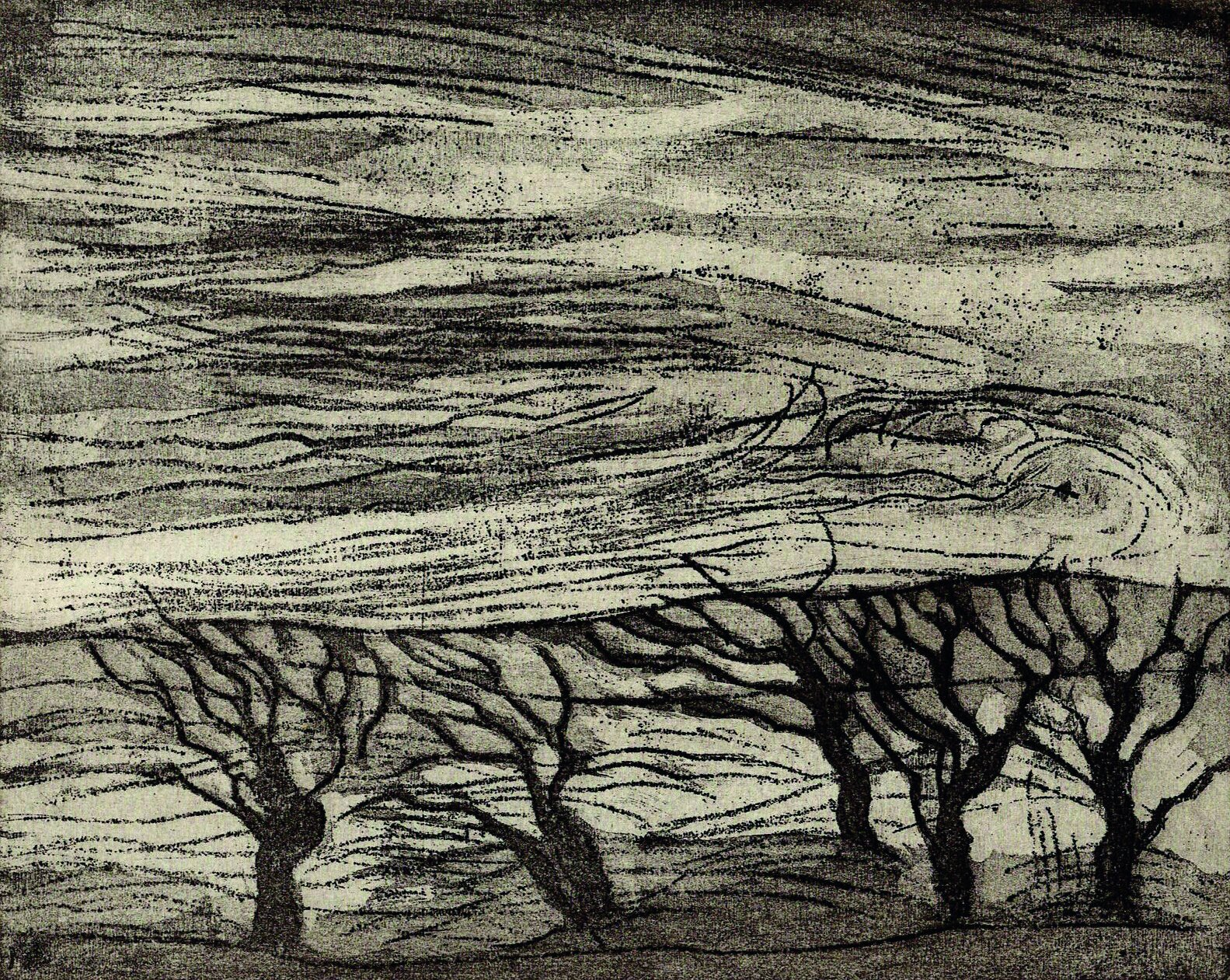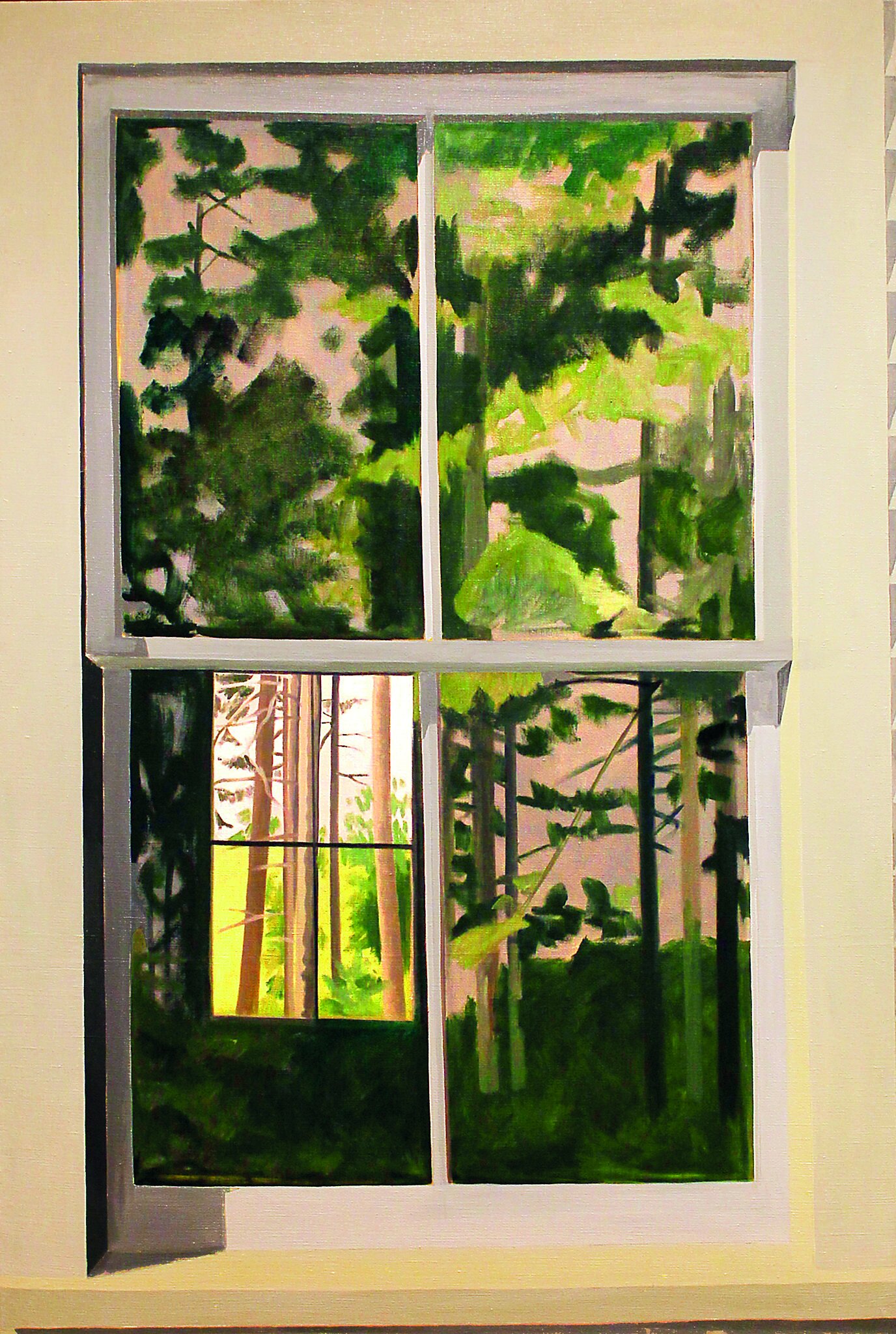Agnes Treherne: Winter
Driving up a narrow country lane to visit the home and studio of Agnes Treherne was like entering one of her paintings. On a clearing, crisp winter’s day, passing orchards leading up to a house with huge windows where the season was sure to enter the house as firmly as it did the surrounding garden, I knew for sure I had arrived at my destination.
Treherne is a painter of place. Be it her view from a window or her feet in the sea. The paintings, charcoal drawings and prints emanate a sense of place that comes from immersion and looking. She is not just seeing, but feeling her surroundings when she works.
When we met we spoke about the influence of Edvard Munch. It seemed to me that her lone figures in certain paintings seemed to capture his blend of contemplation in front of nature and loneliness. Agnes said she had spent time in Norway visiting family and felt sure some of this spirit had crept in. Having studied in Edinburgh, lived in London and travelled to California her sense of the uniqueness of a location’s environment is sharply tuned.
Surprisingly Treherne had not come across the American painter, now in her early 90s, Lois Dodd. Her drawings of and through windows to the surrounding winter landscape mirror Dodd’s use of this device. When later Treherne messaged to say she had looked up Dodd, she said “I feel I’ve found a life long friend”.
William Zimmer, in The New York Times said “Dodd is a realist painter whose subjects are modest in the extreme: broken windows, falling trees, plainly appointed rooms and landscapes distinguished by their lack of distinguishing features.” This could just as easily apply to Treherne. Remarkable in their largely unremarkable nature Treherne chooses to paint the brow of the hill and the trodden path through it rather than a more dramatic view of perhaps a valley between two hills. And yet it is this choice that makes her paintings so convincing. You can feel the cold winter wind blowing across the hillside as the path opens up before her. Speaking of capturing a winter’s day, has the wind ever blown so convincingly through a print than in Witherenden. The wind burnt tips of the trees seem to be crouching below the line of the hills in a vain attempt to be clear of it.
The artist’s mother is often a subject of her work and her depictions of her have a similar feel to the portrait of Cezanne’s wife that she chose to copy in one of her prints. In Feast of St Margaret of Scotland, her mother rests on a church pew. There is no question that this is not a warm space and yet her absorption in sitting in this space is surprisingly calming. In another painting, this time in her house, her mother is a strong presence. Warm inside but always in touch with the cold outside.
The coast features in a number of paintings. What is intriguing about this is that the view point Treherne chooses is most often not one achieved by standing at eye level with the subject. Instead the viewer is placed above the waves or even in the sea itself. Immersive as only the sensation of a trip to the beach in the winter can be, the exhilaration of the boy taking tentative steps into the foam in Flints is palpable whilst a woman sits calmly looking on and another figure crouches. In Brass Point the sparsity of paint is what makes the view of the incoming sea so convincing. The liquid sea, never more powerful than in winter, is depicted here in the lightest of touches, so much so that it feels you are looking right through the painting to the sand/surface below.
The lime-wash paintings on paper arose through circumstance when she was given some left over paints by another artist. Creating a uniquely dense but chalky finish it is a very different surface to the gloss of oils. The drama of the winter sky in From Cinderhill seems perfect for the medium. With its dark and dramatic clouds there are echoes of the landscapes of British painter Paul Nash. Here too, Treherne shares a spirit of wonder at the simplicity and power of nature. Always putting on a better show than any artist can muster, and yet by fighting to do just that her respect for her surroundings radiates.
Treherne comes from a line of artists from her grandfather who both restored paintings and made his own, to her mother and two of her siblings. Her studio is in the family home, making use of small attic rooms, often painting on the floor. Whilst on the face of it a far from ideal studio environment I am convinced that being in that space, surrounded by the Market Garden managed by her father, instills the work with a sense of place. These don't feel like paintings that could have been made far away from their subject.
Prints have offered Treherne the opportunity to work ‘after’ the artists she admires. Etching lines into the plastic lids of ice cream tubs (a technique born of lockdown restrictions), her interpretation of works by Pierre Bonnard, Paul Cézanne, Masaccio and Sassetta become intense variations where her own personal line and subjects reflect on to the works of past masters. Treherne is only able to take a few impressions from each plate before it disintegrates. Each is therefore a unique version, more like a mono-print, and sometimes hand coloured.
Treherne told me it was as much the title of Cézanne’s painting that drew her to make a print after it, she was intrigued by it being the ‘hanged man’s house’. In her version it is as if the subject has been interpreted in winter rather than spring or summer as in the painting, encapsulating the drama of the deceased former resident’s life powerfully.
A collection of paintings, drawings and prints depicting Winter could seem to risk lacking warmth and yet it is the spirit of the sitters, the drama of the skies, the thrill of a winter trip to the sea that makes the art live when all around, nature is largely dormant. Winter has never looked so inviting.
Agnes Treherne is a painter based in East Sussex. She studied Fine Art and History of Art at the University of Edinburgh, followed by the Drawing Year at the Royal Drawing School.

